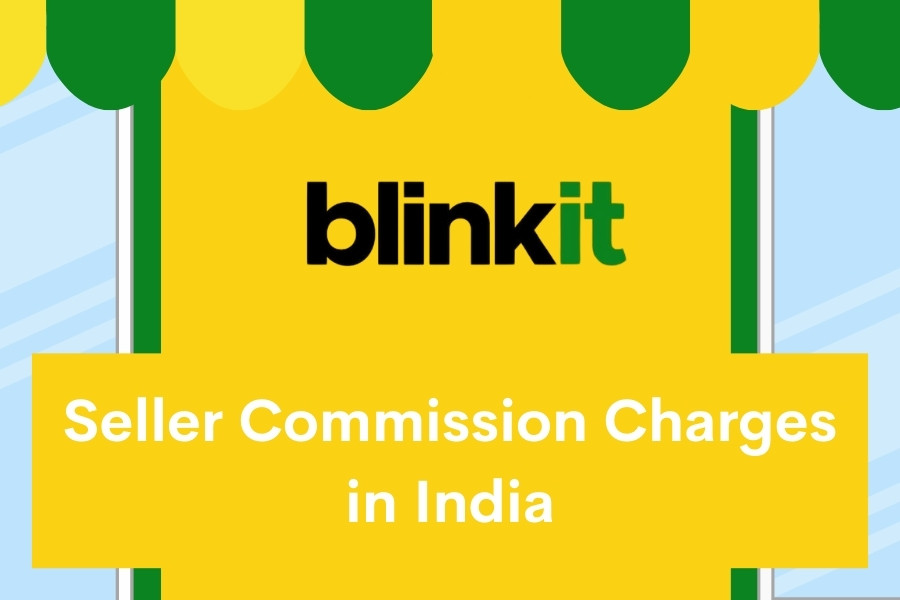
Selling on Blinkit, one of India’s fastest-growing instant delivery platforms, offers retailers and brands a valuable opportunity to reach urban customers quickly and efficiently. However, to maximize profitability on the platform, it’s essential to understand the Blinkit seller commission charges, additional fees, and how to optimize your eCommerce operations. This guide dives deep into the cost structure and strategic ways to boost margins—especially if you’re working with or considering Blinkit account management services.
Understanding Blinkit’s Business Model
Blinkit (formerly Grofers) operates as a hyperlocal delivery platform that connects consumers with nearby sellers for fast delivery of groceries, FMCG products, and daily essentials. Sellers on Blinkit benefit from access to a vast customer base, streamlined logistics, and tech-driven insights. However, this convenience comes with associated costs.
Blinkit Seller Commission Charges
Blinkit charges a Seller commission fee on every product sold via the platform. This fee is typically a percentage of the selling price (excluding GST) and varies by product category and seller type.
Category-Wise Commission Structure (Indicative Range):
-
Groceries & Staples: 5% – 10%
-
Personal Care & Household: 10% – 15%
-
Beverages & Snacks: 8% – 12%
-
Dairy & Bakery: 4% – 8%
-
Fresh Produce: 2% – 6%
Note: These rates can vary based on seller location, sales volume, and promotional partnerships. Blinkit may also offer reduced commission rates to preferred sellers or those with high-performing SKUs.
Additional Fees for Blinkit Sellers
Beyond commissions, there are several other costs sellers must account for:
a. Logistics/Delivery Fees
Blinkit often manages the last-mile delivery, and this may be charged per order or per item. Delivery charges are sometimes absorbed by Blinkit for high-volume sellers but are usually passed on in some form.
b. Packaging Costs
Although Blinkit might provide packaging guidelines, sellers are typically responsible for packing orders in Blinkit-approved materials, which adds to operational costs.
c. Listing or Onboarding Fees
Blinkit currently does not charge a listing fee in most cases, but this can vary for new sellers or during high-demand periods. There may also be charges for special product placements or banner visibility.
d. Returns and Refunds
Returns are rare in the grocery segment but not impossible. Sellers may bear the loss in case of damaged or incorrect deliveries, depending on the resolution outcome.
Profitability Tips for Blinkit Sellers
To maximize your margins, careful planning and execution are essential.
a. Price Strategically
Factor in all Blinkit fees when setting your prices. Use dynamic pricing to stay competitive without sacrificing margins.
b. Optimize Product Listings
High-quality product images, detailed descriptions, and keyword-optimized titles (e.g., “organic brown rice 1kg”) improve visibility and conversion rates.
c. Leverage Blinkit Promotions Wisely
Participate in platform-led promotions selectively. While promotions may reduce per-unit profit, they can significantly boost volume sales, improving cash flow and inventory turnover.
d. Inventory Management
Avoid stockouts or overstocking by tracking demand trends and using inventory management tools. Blinkit rewards consistent sellers with better visibility.
Role of eCommerce Account Management Services
Many sellers partner with third-party eCommerce account management services to streamline operations and drive sales. Here’s how they can help:
a. Expert Onboarding and Listing Optimization
Professionals ensure your Blinkit account is set up correctly, with optimized listings that meet platform standards and rank higher in search.
b. Real-Time Performance Monitoring
eCommerce consultants track your sales, customer feedback, and stock levels in real-time, allowing for agile decision-making.
c. Strategic Promotions and Advertising
Account managers can create data-backed promotional strategies and apply for banner placements, increasing product visibility and ROI.
d. Competitor Analysis
They analyze competitor pricing and positioning, helping you stay ahead in crowded categories.
e. Compliance and Policy Management
Stay updated with Blinkit’s changing policies and avoid penalties by outsourcing compliance tasks to professionals.
Calculating Real Profitability
Here’s a quick example:
-
Selling Price (SP): ₹200
-
Commission (10%): ₹20
-
Packaging + Delivery Costs: ₹15
-
Product Cost: ₹130
-
Net Profit = ₹200 – ₹20 – ₹15 – ₹130 = ₹35
Your profit margin = ₹35 / ₹200 = 17.5%
Using eCommerce management services, sellers have reported profit margin increases of 10–20% due to better pricing, lower returns, and smarter promotions.
Conclusion
Understanding Blinkit Seller commission charges and associated fees is the first step toward building a profitable business on the platform like ecommerce store. By keeping a close eye on cost structures and leveraging expert team of Novel web solution, sellers can unlock higher efficiency and scale their operations faster. Whether you’re a small local brand or an established FMCG player, optimizing your Blinkit presence is essential in the competitive quick commerce space.



